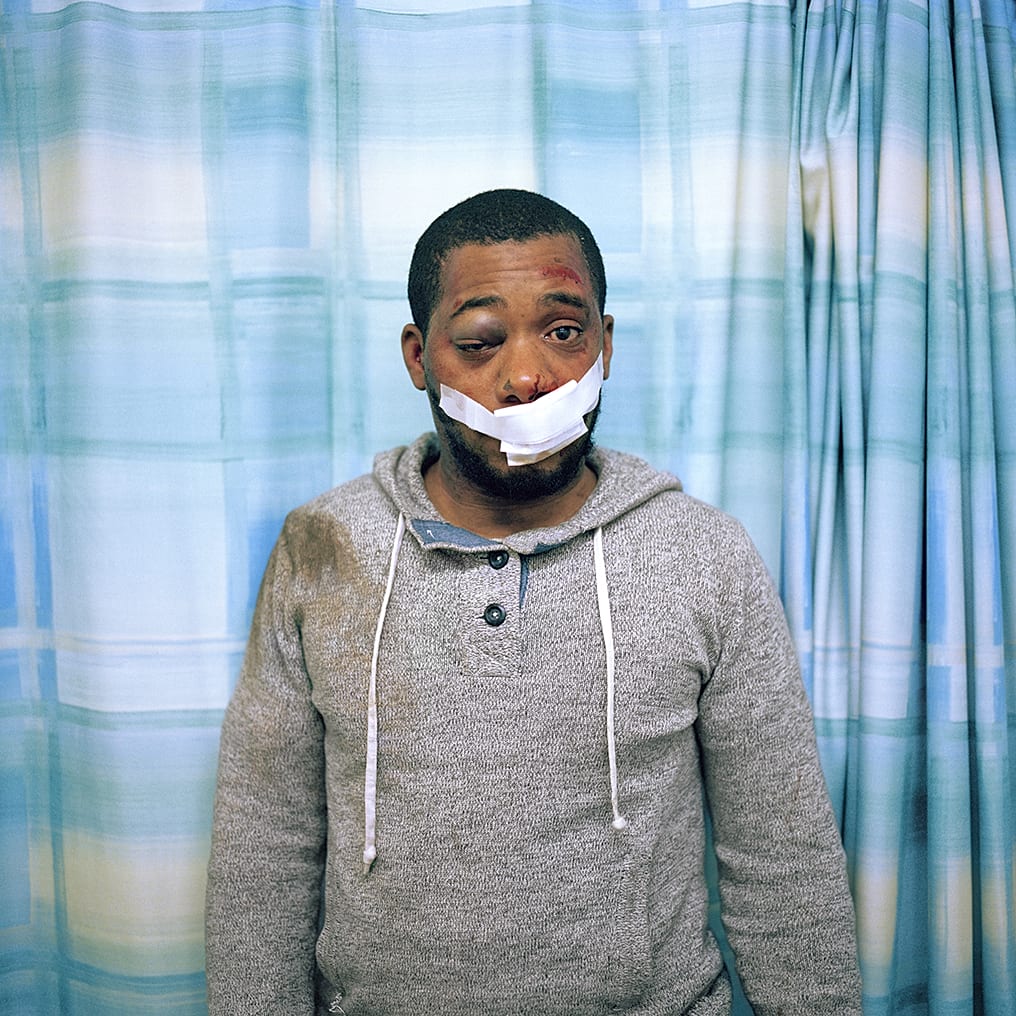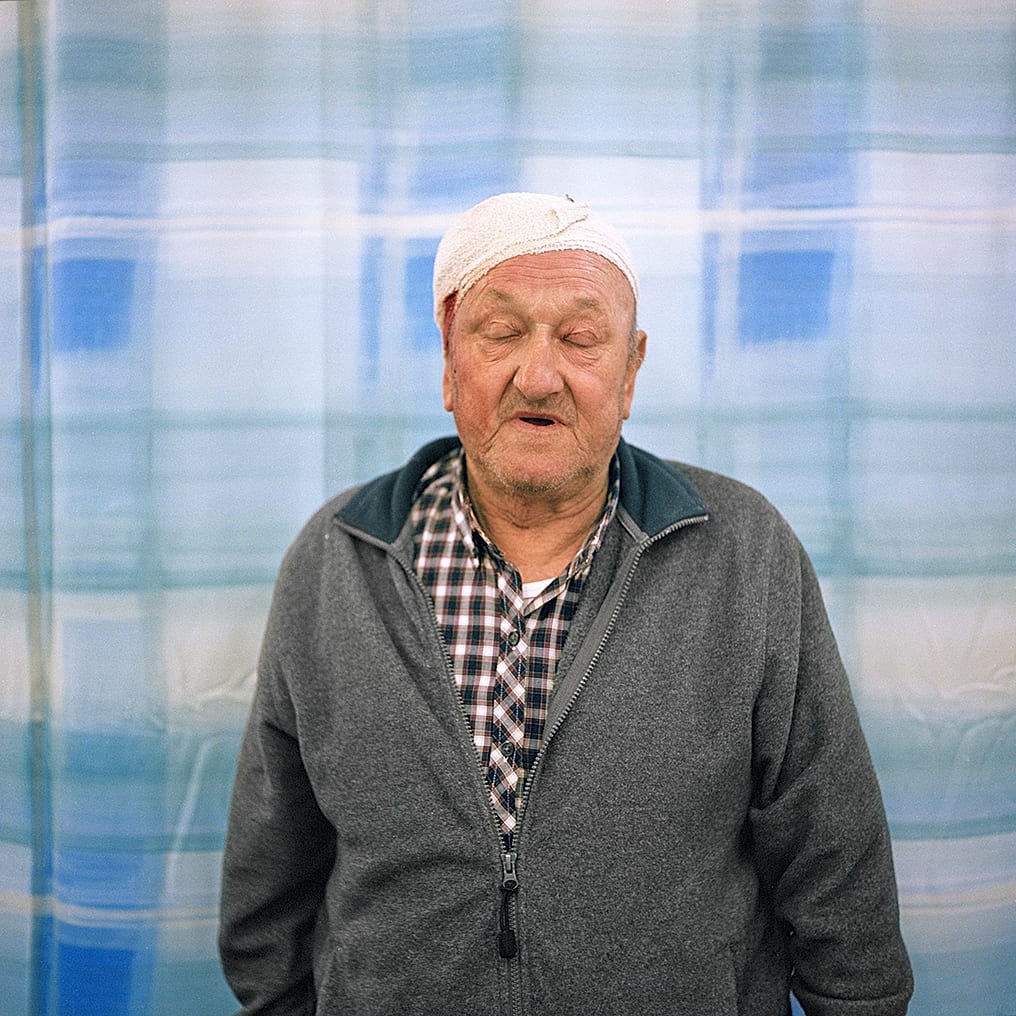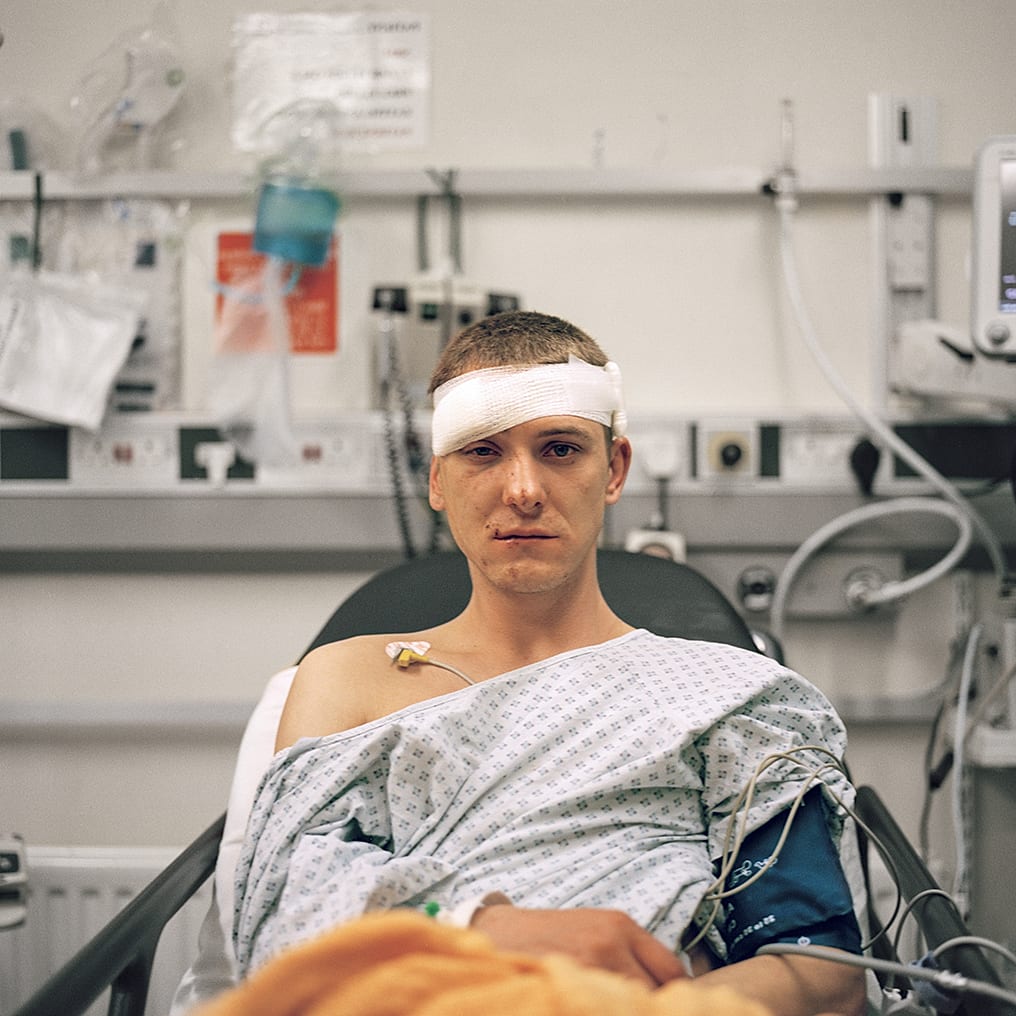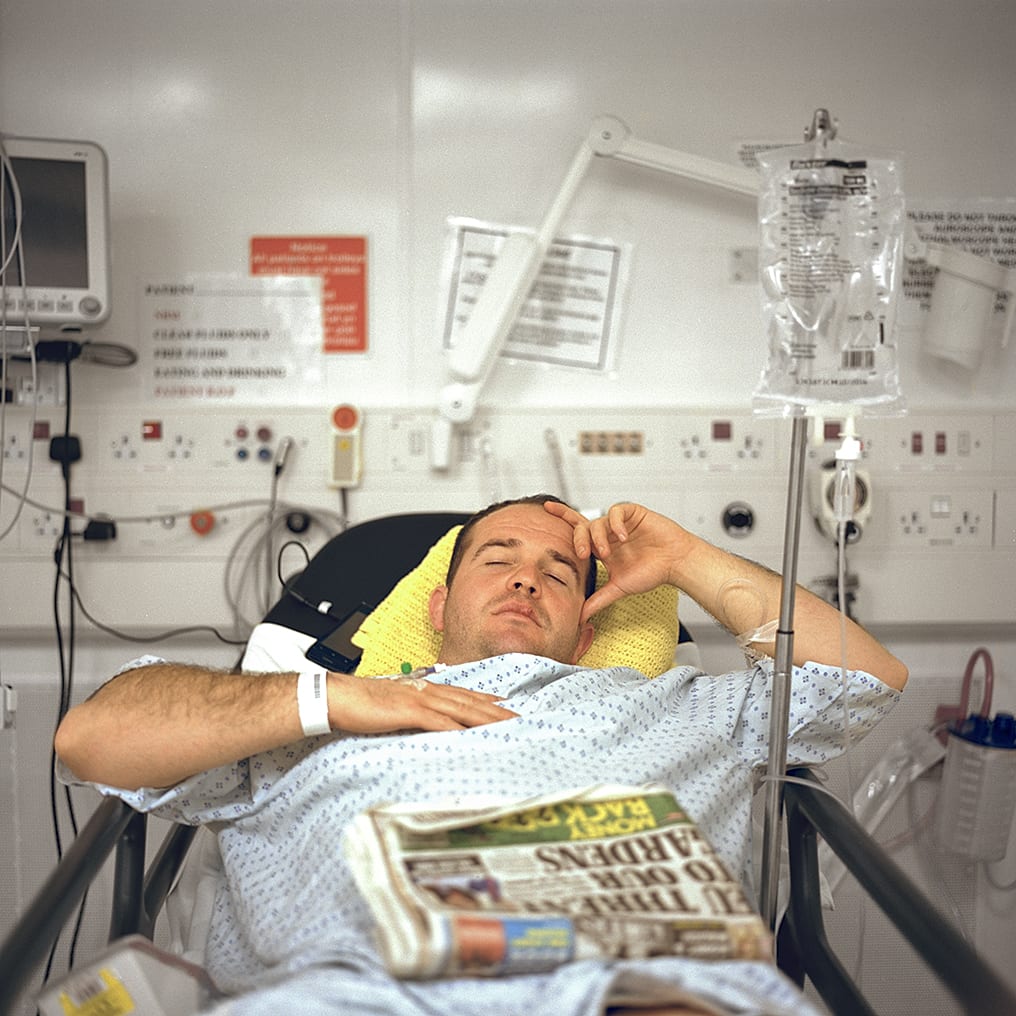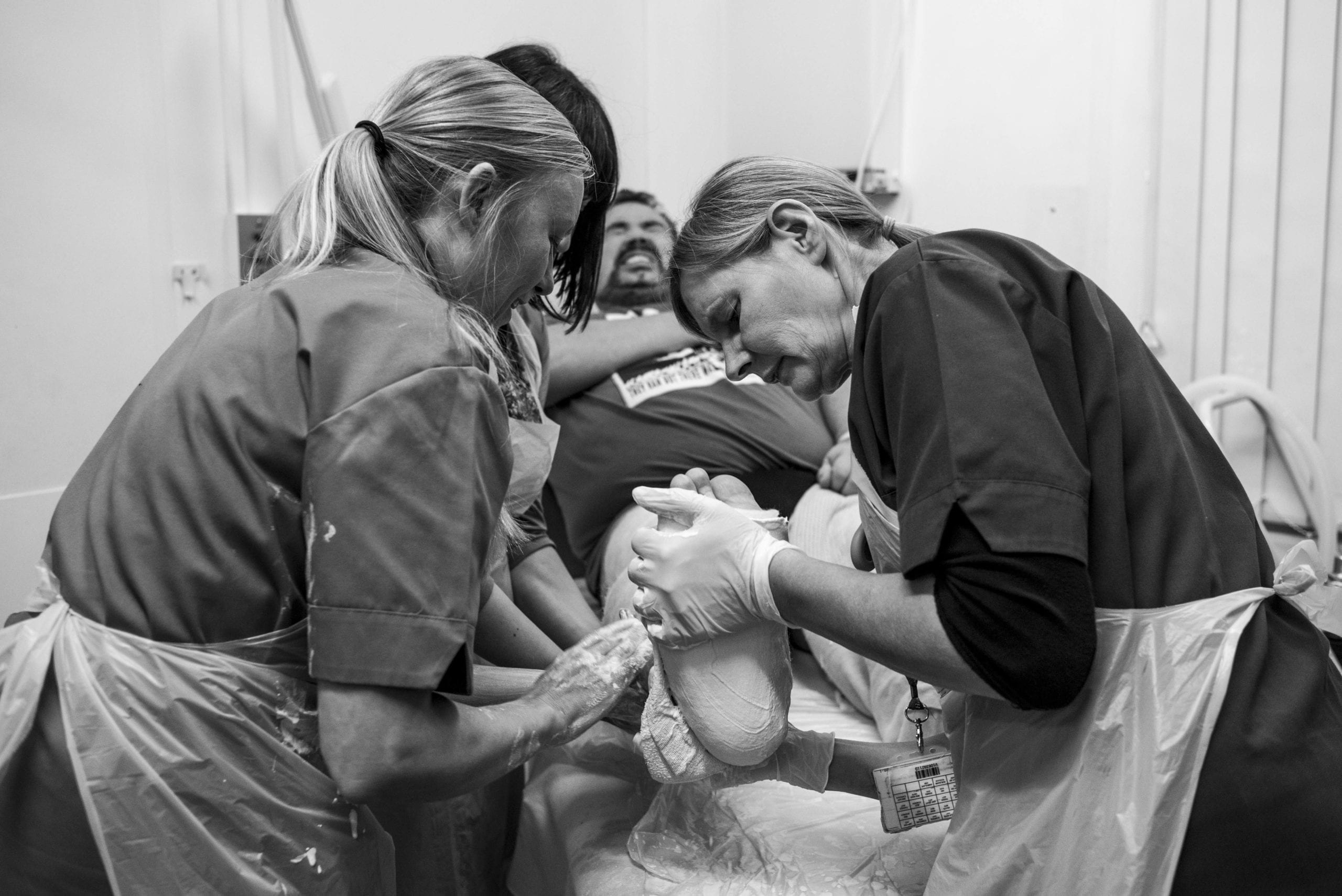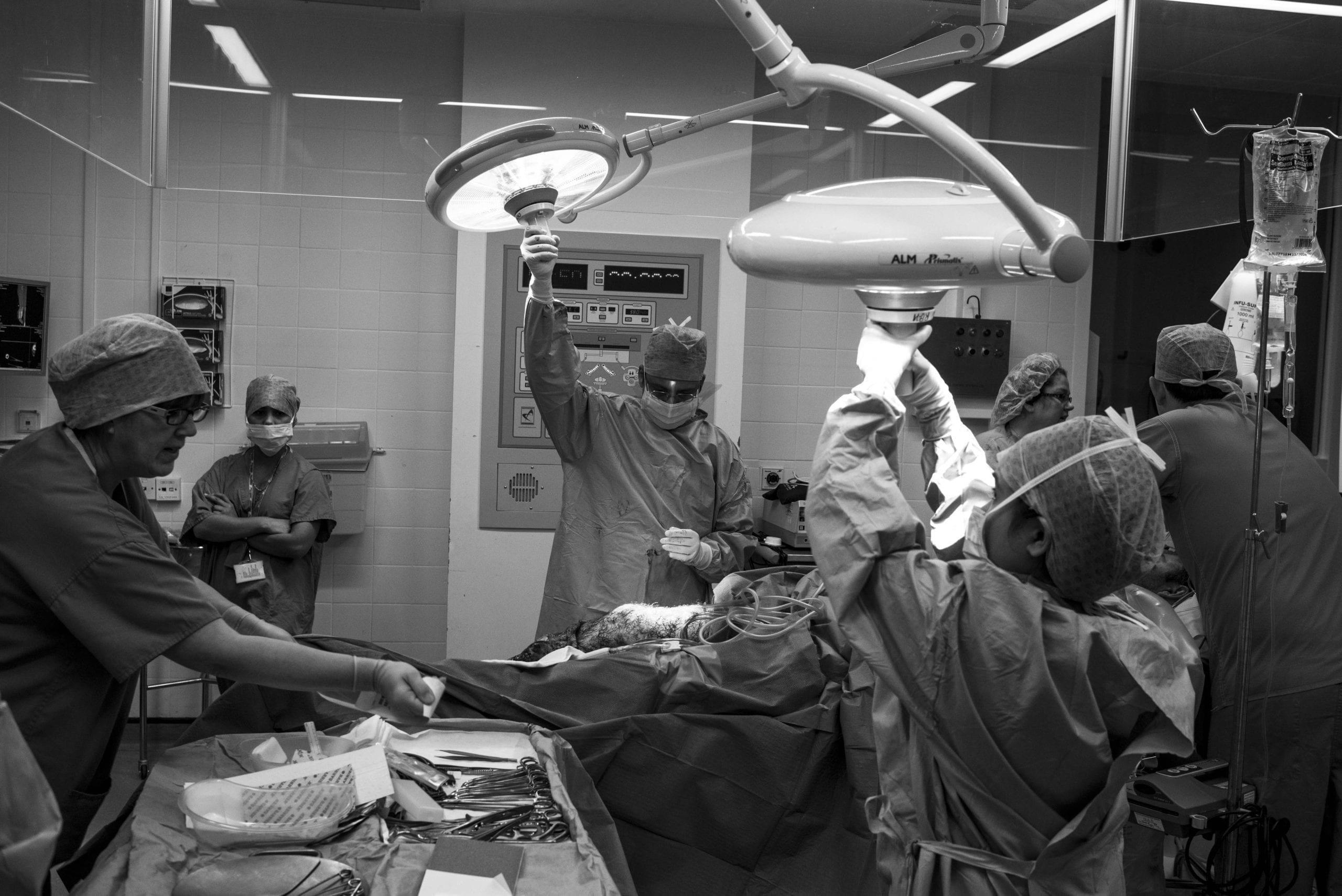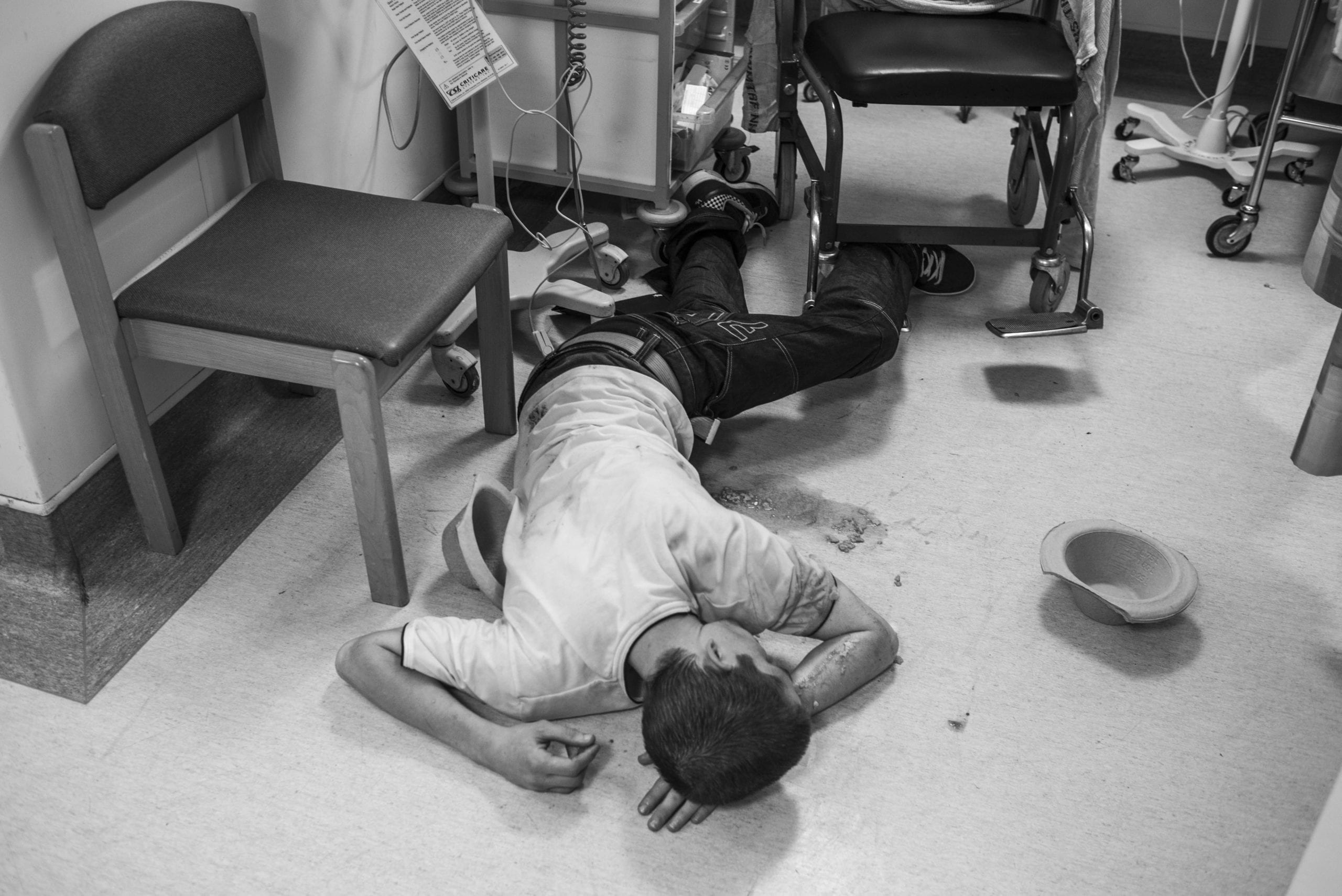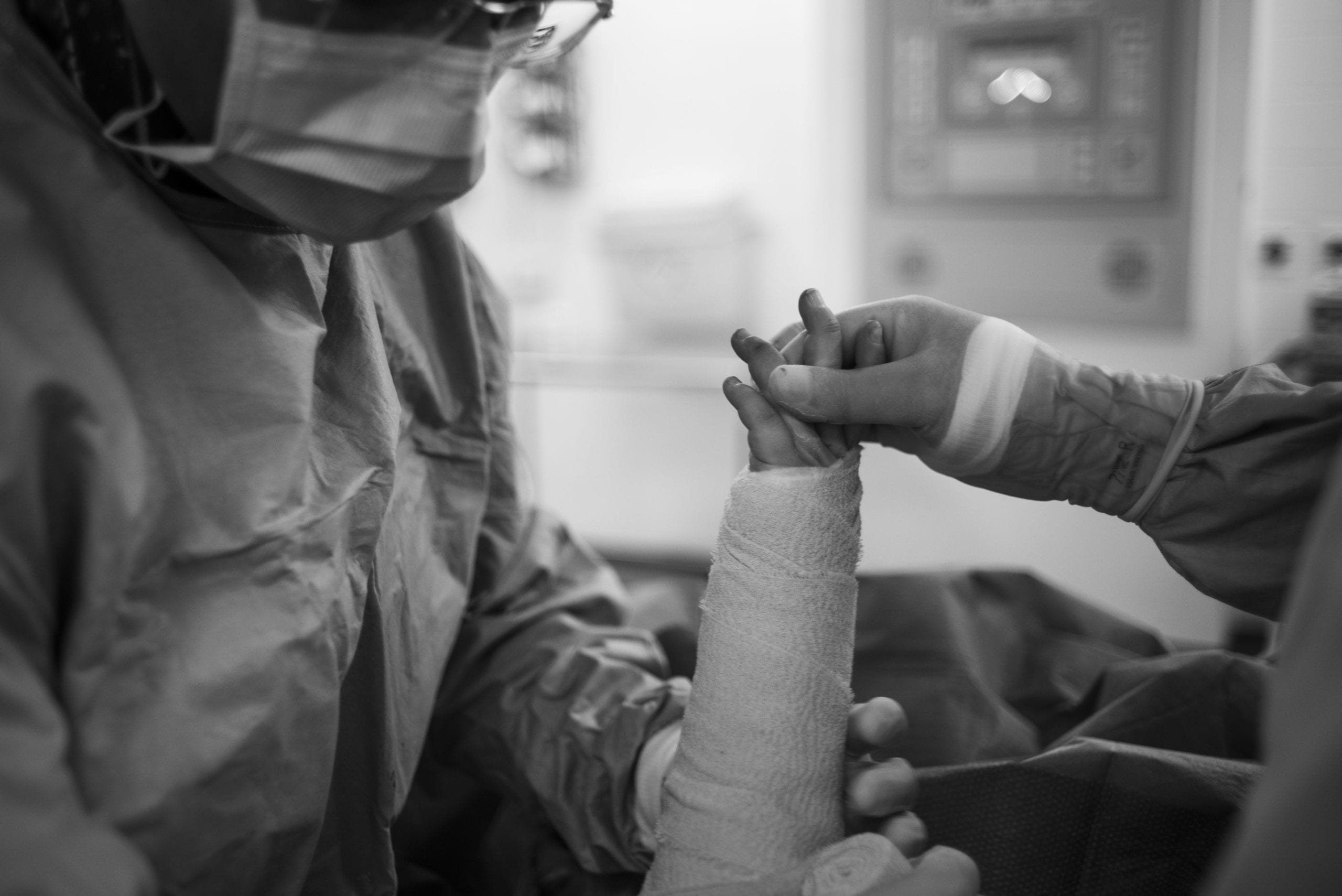On average, a new patient arrives through the swinging doors of the Accident and Emergency department at the Royal Gwent Hospital in Newport every six minutes, every single day of the year.
Sam Peat, a graduate at the University of South Wales’ highly rated documentary photography course, spent months in Gwent’s A&E, capturing in colour the people who wait in those long, institutional hallways and, in intense monochrome, some of the situations and casualties they deal with.
The project, says Peat, aims to explore the challenges facing the NHS. “Sometimes people would stop me in the corridors and ask me to get the doctor to hurry up,” he says on a phone call from his home in Newport. “We have the longest waiting times for a decade, and a lot of A&E departments across the whole of the NHS are understaffed.”
In the small hours of the morning, Peat shows nurses working in unspoken unison, as a man with a fractured leg bares his teeth with pain. In another, he shows the streaks and swirls of plaster residue on the floor of the room where fractured limbs are treated.
Peat shows X-ray machinery, looming like something from a sci-fi film. “It seems to be in constant demand, 24 hours a day,” he says, and also depicts the massive saucer-like lights in the operating theatre, or a patient being slid into a cylindrical, body-length scanner.
But Peat’s images are about people; designed to visualise the pressures A&E staff feel, and the “different” sort of person needed to keep such places operational. “The staff in the A&E ward in Newport are a close and tightly knit group of really close friends,” he says. “They’re capable of doing 14-hour shifts for four days in a row; within that time they see birth and death, incredible pain and families coming together – everything that’s most important in life, all the time.”
Pointedly, among pictures of people in severe trauma, Peat shows a young man lying drunk on the hospital floor; he had to be moved on to a bed by department staff. In another, the department’s paramedic co-ordinator, an exhausted-looking man called Adrian, takes a deep breath in the midst of a long shift. “I saw doctors having to respond to a really horrible car crash and then go directly to see someone who had been waiting for six hours,” he says.
Peat says the thing that struck him the most about his time in A&E was, “There’s a true equality. Every person is treated with the same care and attention – it’s one of its greatest qualities.” It’s the principal on which Britain’s proudest institution was founded, he says, and the one on which it will endure. And so he titled the project, Nothing Like It.

